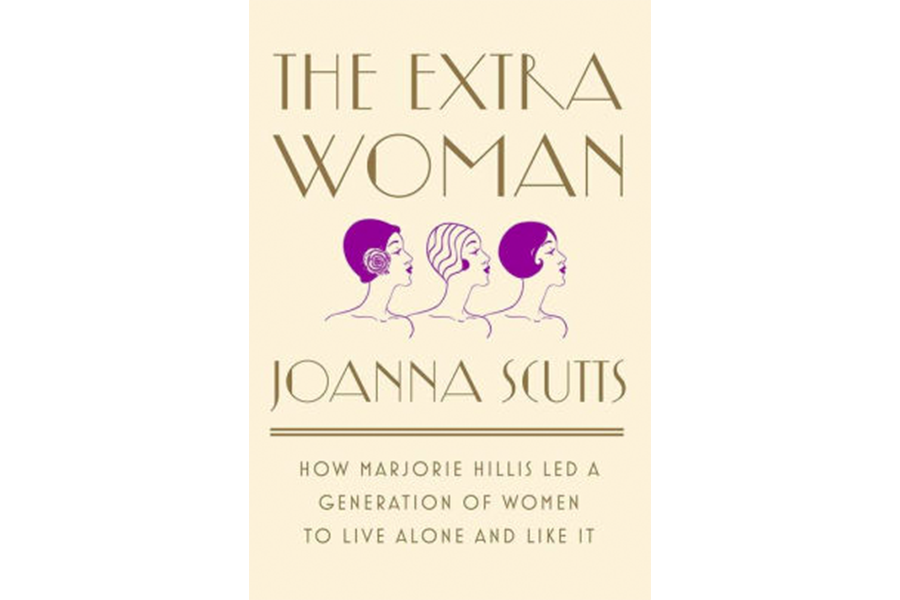'The Extra Woman' is the smart, enjoyable story of the 1930s maverick who embraced singledom
Loading...
In 1936, an editor at Vogue wrote a book in which she put forth the radical notion that women need not be married in order to partake of the joys of eating, drinking, and entertaining at home. “Live Alone and Like It: A Guide for the Extra Woman” became a bestseller and its author, Marjorie Hillis, became a well-known lifestyle guru and syndicated columnist who went on to write six more books of advice for single women.
Hillis is largely forgotten today, but historian Joanna Scutts aims to change that with her smart and enjoyable first book, The Extra Woman: How Marjorie Hillis Led a Generation of Women to Live Alone and Like It. The years between feminism’s first wave, which culminated in 1920 with the success of the campaign for suffrage, and its second, nearly five decades later, are often thought of as a dormant period in the struggle for women’s rights, particularly with the postwar pressure on women to retreat to the suburbs and embrace domesticity. But Scutts elegantly argues that Hillis was a trailblazer during this period, calling her sharp, witty writing “a beacon of social change and a precursor to the feminist revolutions of the 1960s and ’70s. ‘Live Alone and Like It,’ along with its many sequels and imitators, helped to make single women visible and their way of life viable, free of the sympathy and scandal it had attracted in the past.”
In “Live Alone and Like It” and subsequent books, Hillis extolled the virtues of living and working – and playing – in cities, which have long been havens for single women. Hillis took a notably modern approach to dating and relationships, declaring that “a Woman’s Honor is no longer mentioned with bated breath and protected by her father, her brother and the community. It is now her own affair.” With pithy tips on how to dress, what to cook, and how to decorate, Hillis made the single life seem enviable and chic. “The woman who always looks at night as though she were expecting a suitor is likely to have several,” she advised. Her perspective was vastly different from that of other self-help books for women; Scutts quotes a 1940s gem that urged unmarried women that “if there is anything around in trousers who is not an absolute jerk, latch onto him now.”
Of course all that glamour and interior decorating didn’t come cheap, and Scutts makes clear that Hillis was writing from a place of race and class privilege, addressing readers she imagined could, like herself, easily afford their own Manhattan bachelorette pads and nights out on the town. Hillis’s own privilege was compounded when, at age 49, she married a wealthy widower, sparking what Scutts calls a “minor sociological scandal” as newspapers gleefully interpreted the wedding as Hillis’s admission that she’d been hoping to land a husband all along.
Scutts, on the other hand, sees Hillis’s late, happy, and brief marriage (her husband died 10 years after they wed) as affirmation of the lifestyle guru's broader point that women must be free to make independent choices. Hillis refused to consent to marriage, in Scutts’s words, “out of social pressure and simple fear.” Scutts continues, “Seen in this light, her wedding did not repudiate, but reinforced her quietly radical rethinking of what happiness could look like for women, and how it might be achieved.”
By the end of Hillis’s "quietly radical" life, American women were beginning to get noisy in their demands for their legal and political rights. Betty Friedan’s “The Feminine Mystique,” credited with helping to kick off feminism’s second wave, was published in 1963, and the National Organization for Women was founded three years later. The following year, in 1967, the widow Marjorie Hillis published her final book, “Keep Going and Like It,” which was addressed to older live-aloners and breezily instructed them “how to be as glamorous in December as you were in May.” While that message seems hopelessly out of step with the upheavals that were roiling American culture, Scutts's affectionate portrait of Hillis helps draw a line from her subject’s cheerful independence to the choices we enjoy today.








